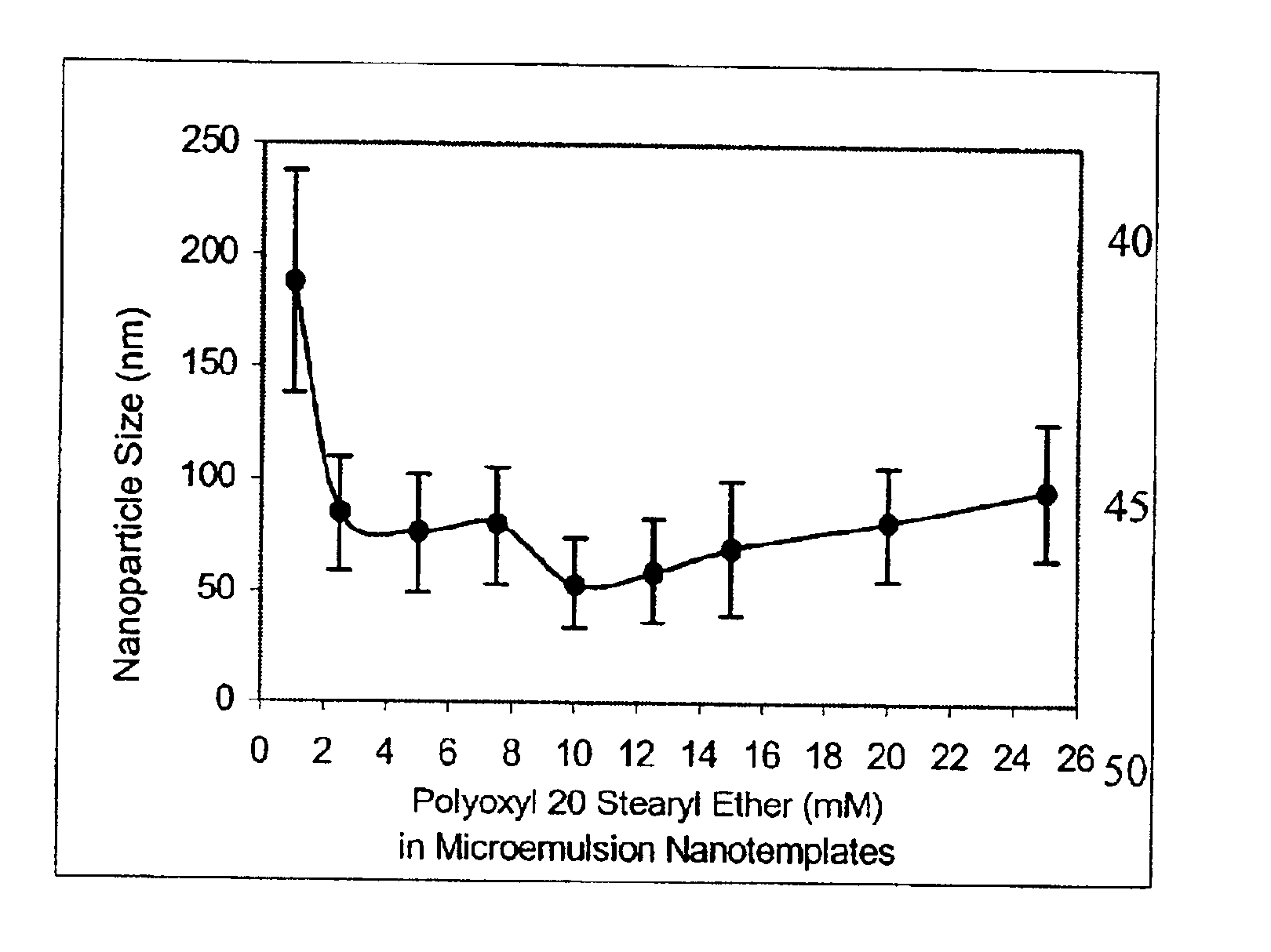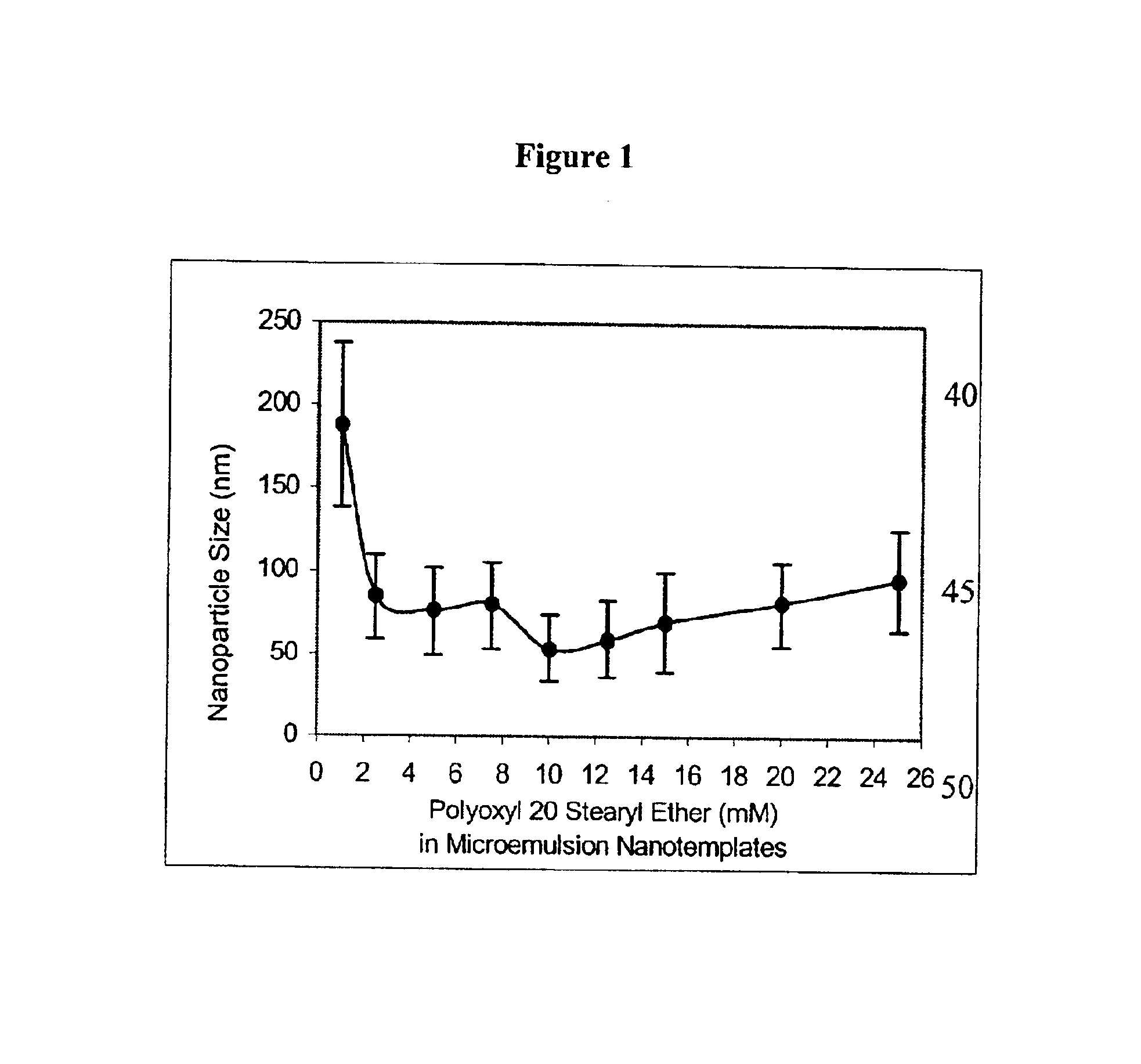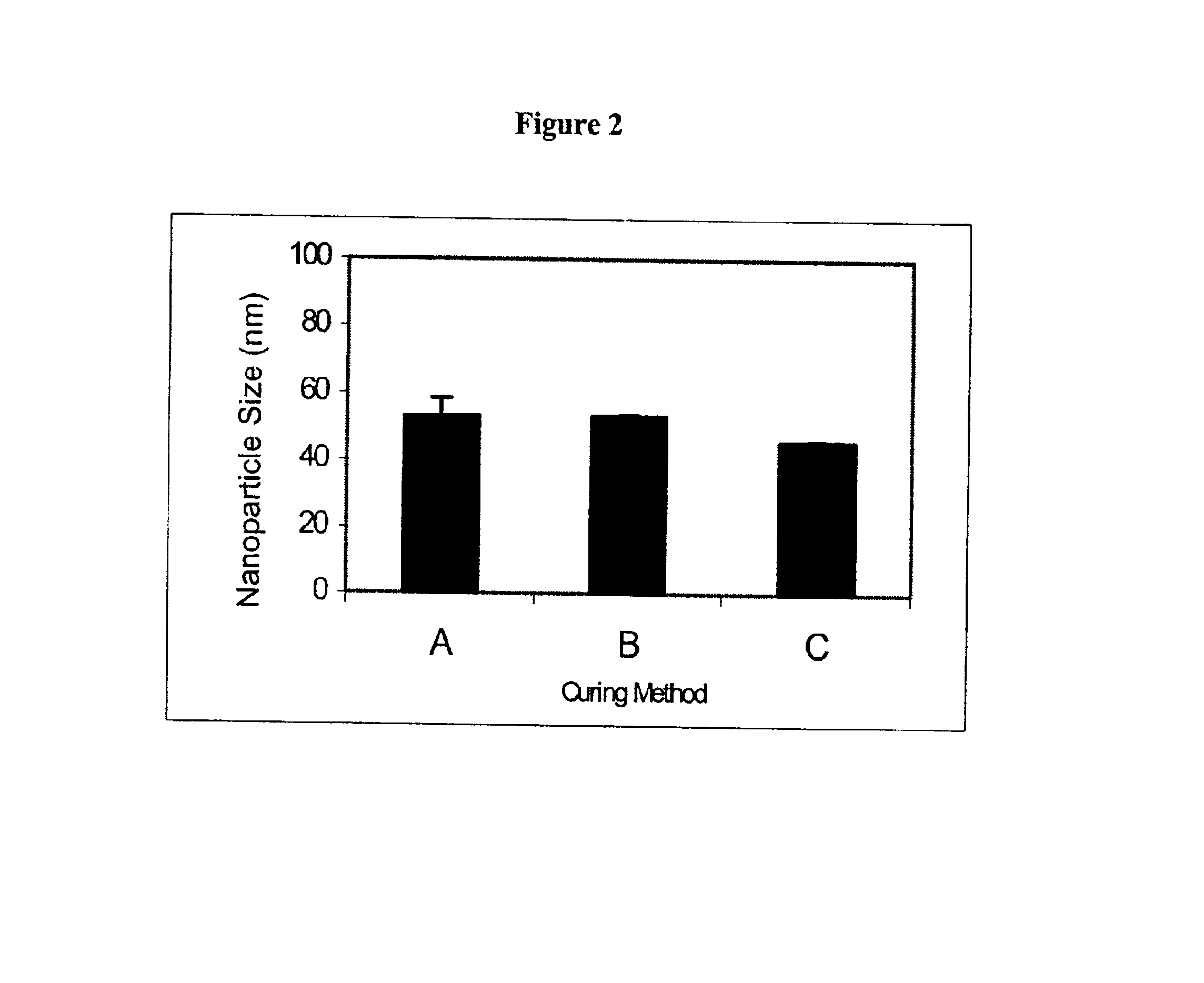Nanoscintillation systems for aqueous-based liquid scintillation counting
a technology of aqueous-based liquid scintillation and counting system, which is applied in the direction of optical radiation measurement, fluorescence/phosphorescence, instruments, etc., can solve the problems of radioonuclides presenting challenges in the development of suitable cocktails, maintaining the stability of dispersion, and maintaining intimate conta
- Summary
- Abstract
- Description
- Claims
- Application Information
AI Technical Summary
Benefits of technology
Problems solved by technology
Method used
Image
Examples
example 1
To determine the existence of an oil-in-water microemulsion window for the microemulsion precursor, exactly two (2) milligrams of emulsifying wax were weighed accurately into ten separate 7-mL glass vials and melted at 50° C. on a temperature calibrated magnetic hot plate. Water (0.2 μm filtered) was then added (750-1000 μL) to form a homogeneous milky slurry in the stirring water at 50° C. To form the microemulsion precursor, the surfactant polyoxy 20 stearyl ether (100 mM) in water was added (0-250 μL) so that the final surfactant concentration ranged from 0 mM to 25 mM in the ten vials. The microemulsion precursor was then removed from heat (52-54° C.) and allowed to cool to 25° C. while stirring. When cooled, visual inspection showed that systems with final surfactant concentration less than 2.5 mM were precipitated, systems with final surfactant concentration between 2.5 mM and 10 mM were either very slightly turbid or clear, and systems with a final surfactant concentration gr...
example 2
Preparation of polyoxyethylene 2 stearyl ether nanoparticles. Three separate samples of polyoxyethylene 2 stearyl ether nanoparticles were engineered using the following process. Polyoxyethylene 2 stearyl ether (2 mg) was melted at 50-55° C. and dispersed in 970 microliters of water at the same temperature. Thirty microliters of solution of Tween 80 (10% v / v in water) was added to produce a clear oil-in-water microemulsion at approximately 55° C. The oil droplet size of liquid polyoxyethylene 2 stearyl ether was measured by photon correlation spectroscopy to be 22.2±1.8 nanometers at approximately 55° C. Polyoxyethylene 2 stearyl ether nanoparticles were cured by three different methods as follows: Method A) cooling of the undiluted oil-in-water microemulsion at 55° C. to room temperature while stirring, Method B) cooling of the oil-in-water microemulsion at 55° C. by placing undiluted in a refrigerator at 4° C., and Method C) diluting (1 / 10) the oil-in-water microemulsion at 55° C....
example 3
Preparation of Emulsifying Wax nanoparticles. Three separate samples of emulsifying wax nanoparticles were engineered using the following process. Emulsifying wax (2 mg) was melted at 50-55° C. and dispersed in 970 microliters of water at the same temperature. Thirty microliters 100 mM polyoxyethylene 20 stearyl ether, which is sold under the trademark Brij 78 were added to produce a clear oil-in-water microemulsion at approximately 55° C. The oil droplet size of liquid emulsifying wax was measured by photon correlation spectroscopy to be 24.5±0.4 nanometers at approximately 55° C. Emulsifying nanoparticles were cured by three different methods as follows: Method A) cooling of the undiluted oil-in-water microemulsion at 55° C. to room temperature while stirring, Method B) cooling of the oil-in-water microemulsion at 55° C. by placing undiluted in a refrigerator at 4° C., and Method C) diluting (1 / 10) the oil-in-water microemulsion at 55° C. with water at 4° C. The results as shown i...
PUM
| Property | Measurement | Unit |
|---|---|---|
| diameter | aaaaa | aaaaa |
| diameter | aaaaa | aaaaa |
| concentration | aaaaa | aaaaa |
Abstract
Description
Claims
Application Information
 Login to View More
Login to View More - R&D
- Intellectual Property
- Life Sciences
- Materials
- Tech Scout
- Unparalleled Data Quality
- Higher Quality Content
- 60% Fewer Hallucinations
Browse by: Latest US Patents, China's latest patents, Technical Efficacy Thesaurus, Application Domain, Technology Topic, Popular Technical Reports.
© 2025 PatSnap. All rights reserved.Legal|Privacy policy|Modern Slavery Act Transparency Statement|Sitemap|About US| Contact US: help@patsnap.com



